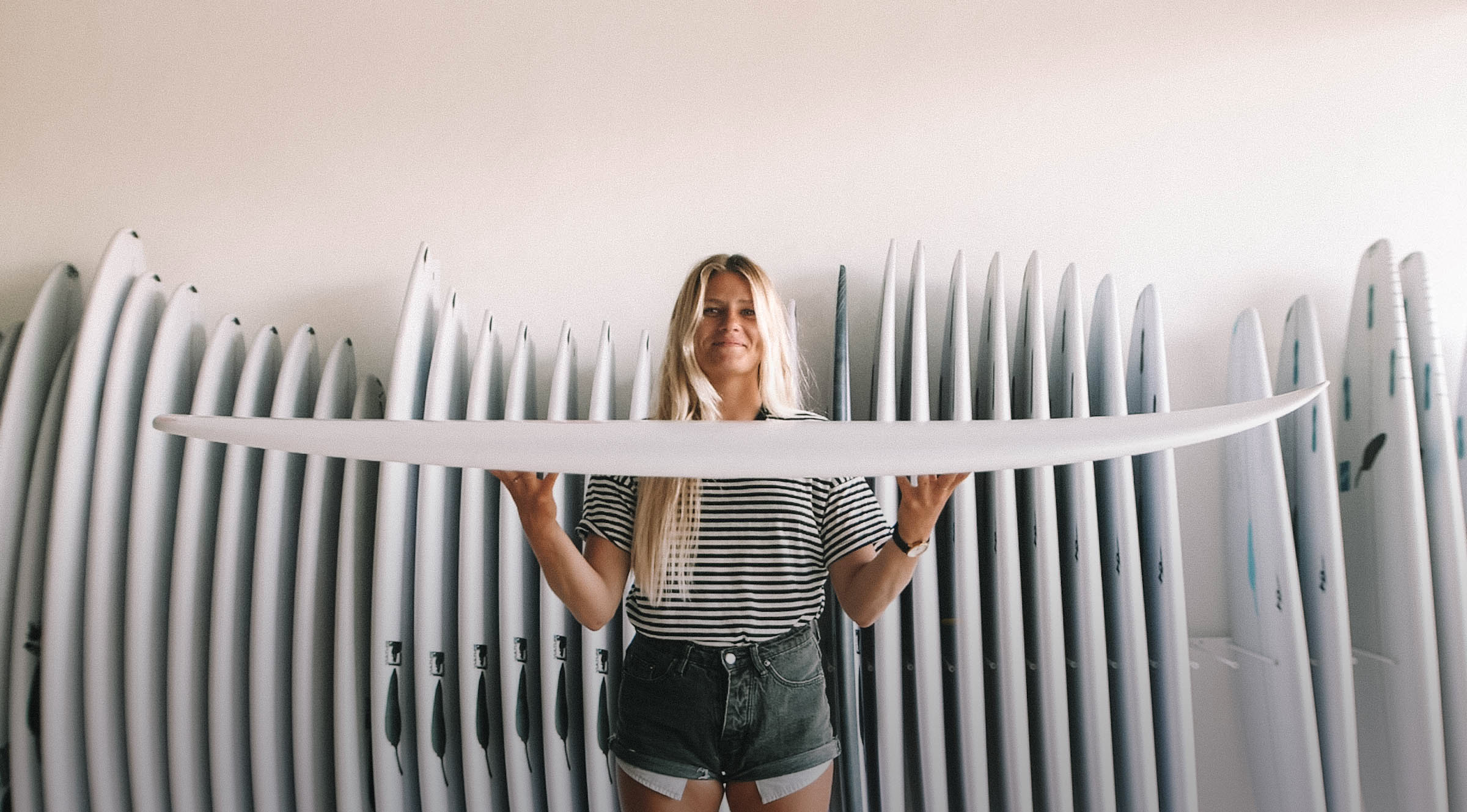

#1 - copy
Online surf coaching for beginners & intermediates
#1 - copy

Online surf coaching for beginners & intermediates
More speed equals more possibilities, as most of surfing’s manoeuvers require good momentum. At a beginner level, it is already possible to feel how shifting weight over the front foot provides more speed. Intermediate and advanced surfers do more than just shift weight over their feet, they use specific parts of the wave to create their own acceleration.
Before you go any further with speed generation techniques, make sure you understand 3 key aspects that greatly affect your acceleration potential.
 To accelerate, you need to use to wave’s power. To use the wave’s power, you need to know where to find it. The top third of the wave, closest to the lip, is the steepest and most powerful part of the wave. This area is commonly referred to as the “pocket” or the “curl”. It’s where the magic happens, where experienced surfers go to get their “push” and set up their manoeuver.
To accelerate, you need to use to wave’s power. To use the wave’s power, you need to know where to find it. The top third of the wave, closest to the lip, is the steepest and most powerful part of the wave. This area is commonly referred to as the “pocket” or the “curl”. It’s where the magic happens, where experienced surfers go to get their “push” and set up their manoeuver.
“Pumping” refers to act of surfing up and down the face of the wave in a smooth flowing motion. Surfers use this technique to reposition themselves in the top part of the wave (pocket) and use the wave’s power to get propelled forward.
 Wave #1
Wave #1
This surfer adequately uses the whole face of the wave. You need to go up onto the top of the face, and down the face, just over the bottom of the wave.
Wave #2
Don’t just wiggle in the middle. Gravity is your friend. Go up onto the steep, powerful part, and then go down just like on a skateboard ramp, gaining speed as gravity pushes you down.
Wave #3
Be careful not to go too low on the bottom of the wave. As we have seen in the previous illustration, the more you go down the bottom of the wave, the flatter, weaker it gets. This means you can easily lose your speed and eventually get stuck in the white-water.
The art of generating speed is done by moving to specific parts of the wave with proper technique and by shifting your weight over the surfboard at specific times. It’s not enough to just “reach the powerful parts” and go down. You need to know when to be heavy (compress) and when to be light (decompress).
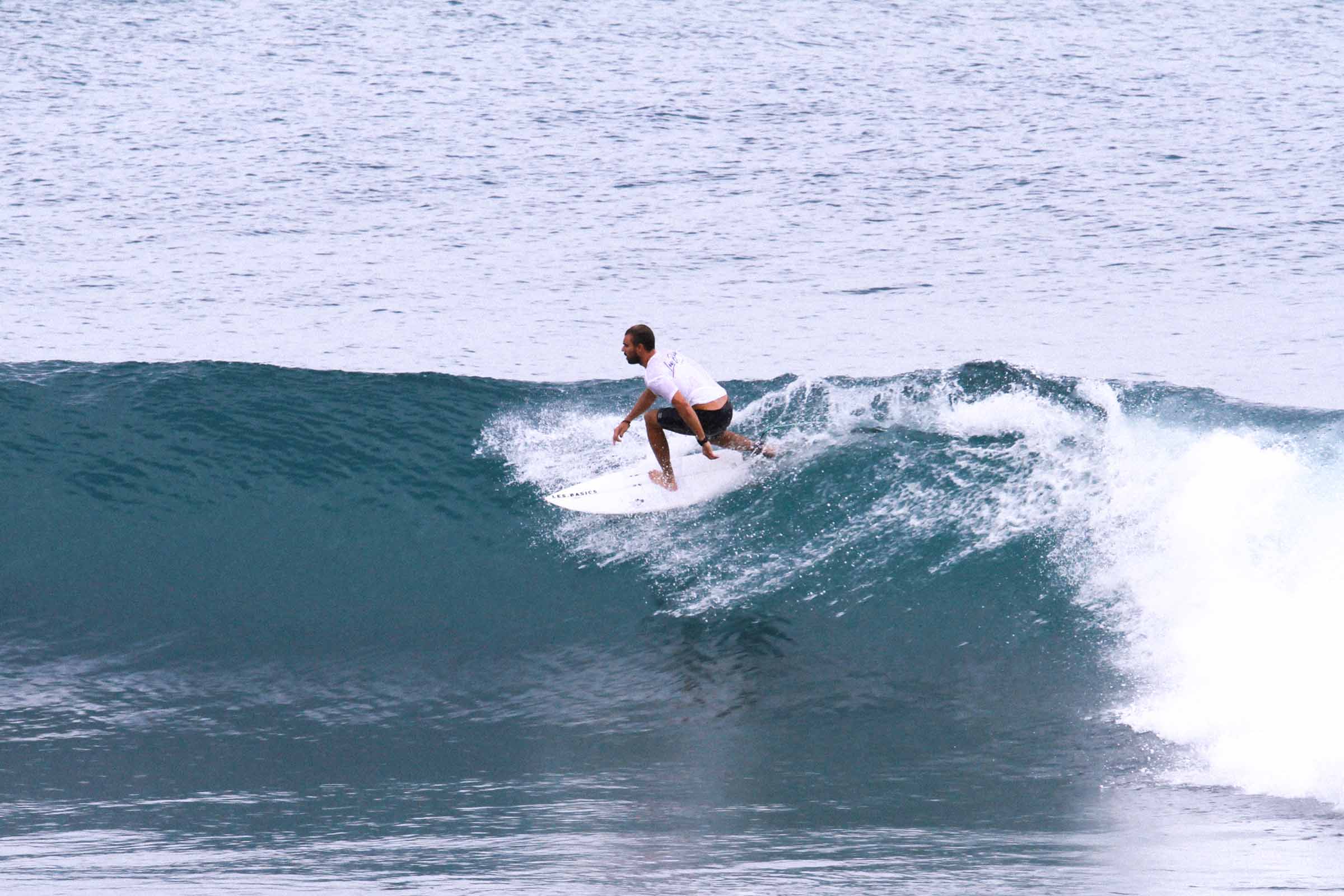
When you’re going down the wave, you want to be heavy so that gravity can push you down. After you reach the top of the wave, your board should start turning back down towards the bottom of the wave. At this moment, bend your knees and compress down. You want to be heavy over your board and apply extra pressure, especially on your front foot.
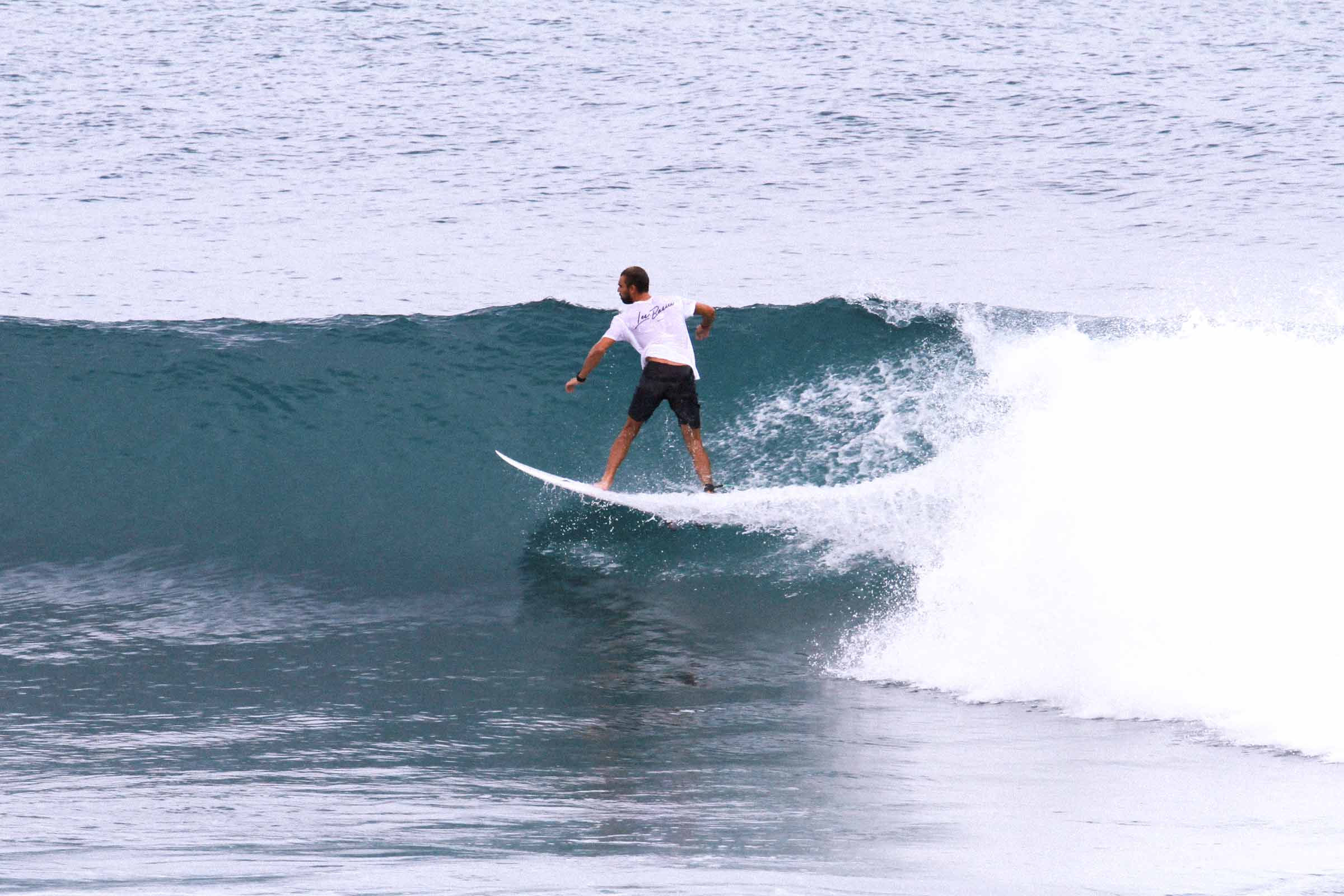
As you reach the bottom of the wave, you start to point your board towards the top of the wave again. When you start going back up on the face of the wave, you need to be as light as possible, to lose as less speed as possible. To do so, unbend your knees, decompress and stand high.
To go as fast as possible, you need to surf on your rails as you pump up and down the wave.
The Surfboard’s Rocker (banana shape of the board) slows you down drastically when your surfboard lies flat on the water. The best way to limit the “drag” of your surfboard is to surf it on its rails (edges). This way, instead of having all the drag of your surfboard’s banana shaped bottom, your board is only partially in contact with the water (sinking on the right or left edge).
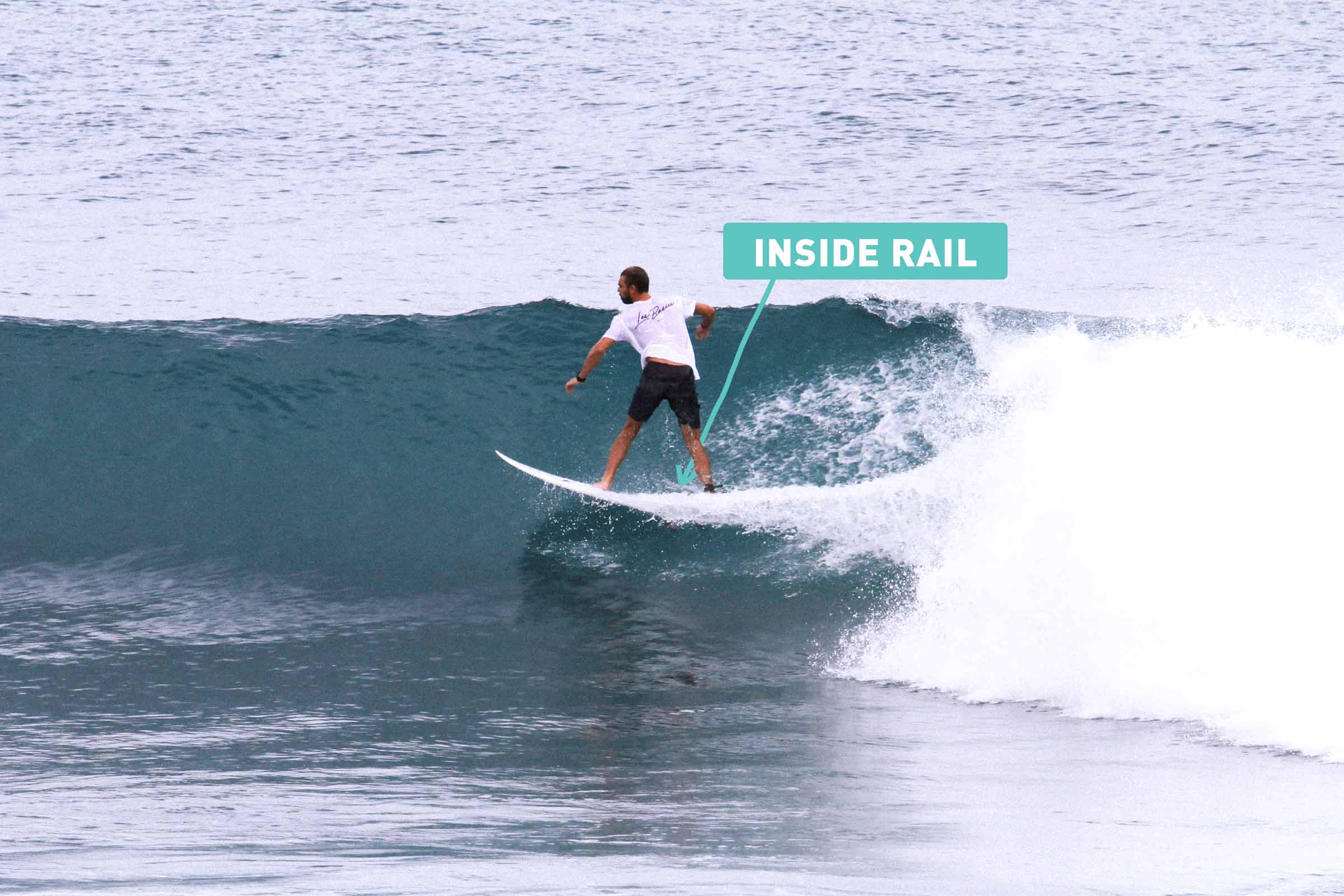
As the surfer decompresses and goes up the wave, his board sinks on the inside rail. Notice how one of the surfboards rail sinks in the water, and the other half of the board is out of the water. This limits drag as the surfer moves forward.
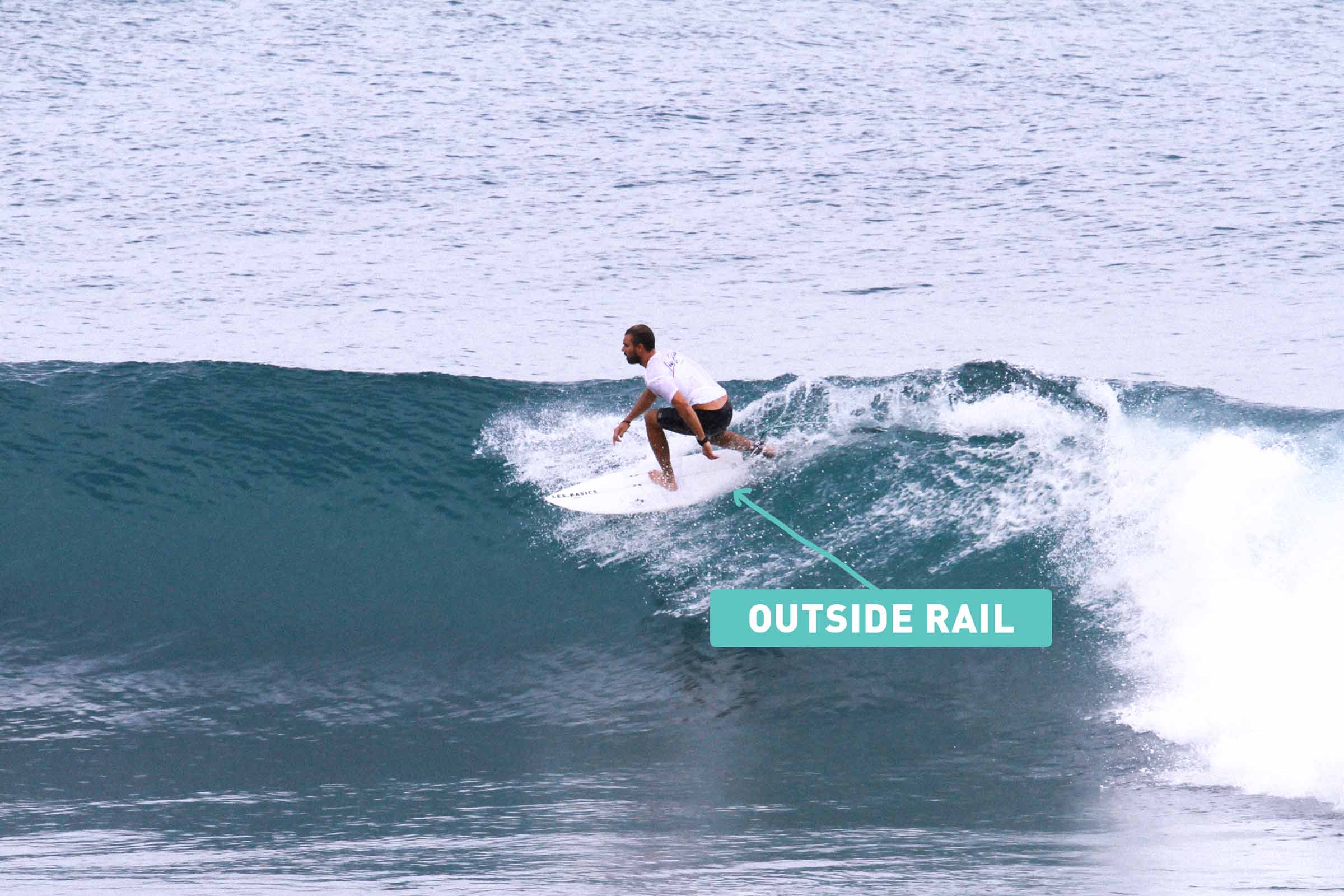
When the surfer reaches the top part of the wave, he starts pointing his board back down to the bottom, and puts extra weight over his outside rail. The transition from the inside rail to the outside rail helps to reduce drag as the surfboard doesn’t lay flat on the water.
Throwing your arms in the direction you need to go will help your propulsion towards that area. This is especially important on small waves that don’t offer much power.
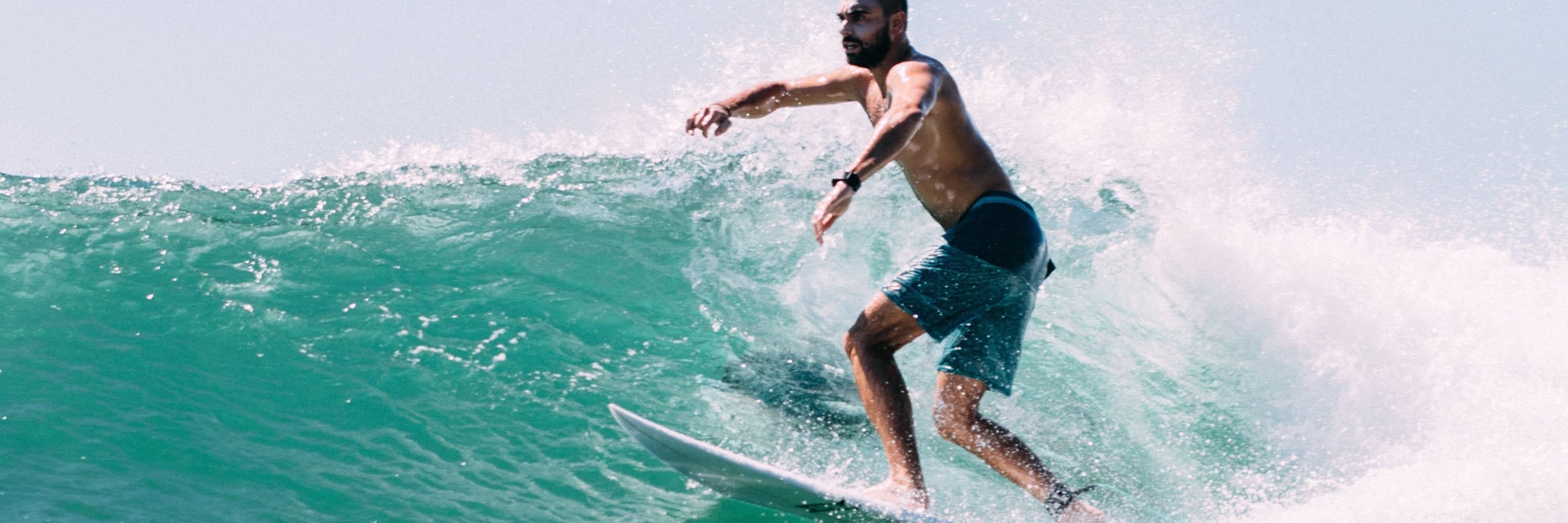

This is more of an advanced technique tip. If you need extra speed for barrels or very fast peeling waves, you can try moving your stance by about one foot. Your back foot should land at the end of your traction pad or just over it.
Keep your upper body centred over your surfboard, turn smoothly with your hips, knees and ankles. Don’t wiggle with quick, firm, small, pumps down the middle of the face. This will create extra drag and slow you down. Use the whole face of the wave, pumping up and down in a fluid motion.
 Throwing your arms, compressing and decompressing, surfing from rail to rail, moving your feet forward, all these technique tips are useless if you aren’t surfing the proper area of the wave. Practice pumping up and down the wave and reach the pocket for maximum speed generation potential.
Throwing your arms, compressing and decompressing, surfing from rail to rail, moving your feet forward, all these technique tips are useless if you aren’t surfing the proper area of the wave. Practice pumping up and down the wave and reach the pocket for maximum speed generation potential.
Be careful not to surf too far on the shoulder, or too low down the bottom of the wave. These areas are weak and hard to accelerate on. Learning to deal with the most powerful parts of the wave takes time and practice, but it’s one of the things that makes surfing more and more exciting.
7-day surf coaching retreats
7-day surf coaching retreats
10-day surf coaching retreats
10-day surf coaching, intermediates only
10-day surf coaching, intermediates only
Surf better, faster
Get news about our latest Tutorials
& Surf Coaching Retreats
Leave a comment